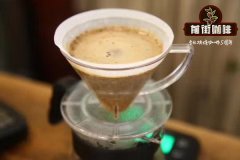Introduction to the treatment of Coffee Raw beans Why should they be washed natural Coffee treatment

Professional coffee knowledge exchange more coffee bean information please follow the coffee workshop (Wechat official account cafe_style)
Preliminary treatment
The next step after harvest is to take the coffee seeds out of the ripe fruit and dry them. This can be achieved in two ways: dry and wet.
The method of drying
Drying or "natural" methods include drying whole cherries. This is the oldest and simplest method, requiring almost no machines. Harvested cherries are sorted and washed by hand to remove immature, overripe and damaged cherries as well as any dirt, soil, branches and leaves. This can also be achieved by floating cherries in the water.
The coffee fruit is spread out in the sun, either on a large concrete or brick patio, or on a waist-high support. If it rains, they will be covered. When the cherries dry, rake them flat or turn them over by hand to make sure they dry evenly. It takes four weeks for cherries to fully dry. In larger plantations, after coffee is dried in the sun for a few days, machine drying is sometimes used to speed up the process.
Dried cherries are fragile, the shell is hard, and the highest moisture content is 12.5%. Dried cherries are stored in silos until they are sent to the factory to be shelled, where the outer layer of dried cherries is removed. These "green coffee beans" are then classified and sold by grades.
Almost all Robusta are processed in this way. Most Arabica coffee beans produced in Brazil, most Arabica coffee beans produced in Ethiopia, Haiti and Paraguay, and some Arabica coffee beans produced in India and Ecuador are dried.
Wet method
The wet process requires the use of special equipment and available water. Like drying, ripe cherries should be washed first. Then use a machine to squeeze the cherries into pulp so that the pulp and skin are separated from the coffee beans. What's left is a smooth skin (mucus) and a piece of parchment.
After further washing, the beans remove the residual pulp and put them in a large container, where the mucus is broken down by natural enzymes and washed away. This takes 24 to 36 hours. Then wash the coffee with clean water. At this time, the water content of coffee is about 57%.
To reduce moisture to the ideal 12.5%, parchment coffee is either dried in the sun, in a mechanical dryer, or both. It takes 8 to 10 days to dry. Then the parchment coffee is stored.
Before selling, the coffee is peeled, parchment removed, then cleaned, screened, sorted and graded. This "green coffee" is now on the market.
END
Important Notice :
前街咖啡 FrontStreet Coffee has moved to new addredd:
FrontStreet Coffee Address: 315,Donghua East Road,GuangZhou
Tel:020 38364473
- Prev

Arabica Karabasta shape distinguishes Arabica from Robsta, okay? coffee picking.
Professional coffee knowledge exchange more coffee bean information please follow the coffee workshop (Wechat official account cafe_style) where coffee grows Coffee Tree is a tropical evergreen shrub (Coffea) between Cancer and Capricorn. The two most commercially valuable varieties grown are Arabica coffee (Arabicas) and Kabica coffee (as). The general Arabica plant is
- Next

Coffee raw bean roasting temperature what is the effect of coffee roasting coffee roasting process
Professional coffee knowledge exchange more coffee bean information please follow the coffee workshop (Wechat official account cafe_style) Coffee roasting and grinding coffee in the roasting process, the formation of coffee's unique flavor, aroma components and typical brown coffee beans. Coffee is known to have more than 1000 different aroma components. By changing the baking conditions, the final coffee can be obtained according to the preferences of consumers.
Related
- Beginners will see the "Coffee pull flower" guide!
- What is the difference between ice blog purified milk and ordinary milk coffee?
- Why is the Philippines the largest producer of crops in Liberia?
- For coffee extraction, should the fine powder be retained?
- How does extracted espresso fill pressed powder? How much strength does it take to press the powder?
- How to make jasmine cold extract coffee? Is the jasmine + latte good?
- Will this little toy really make the coffee taste better? How does Lily Drip affect coffee extraction?
- Will the action of slapping the filter cup also affect coffee extraction?
- What's the difference between powder-to-water ratio and powder-to-liquid ratio?
- What is the Ethiopian local species? What does it have to do with Heirloom native species?

